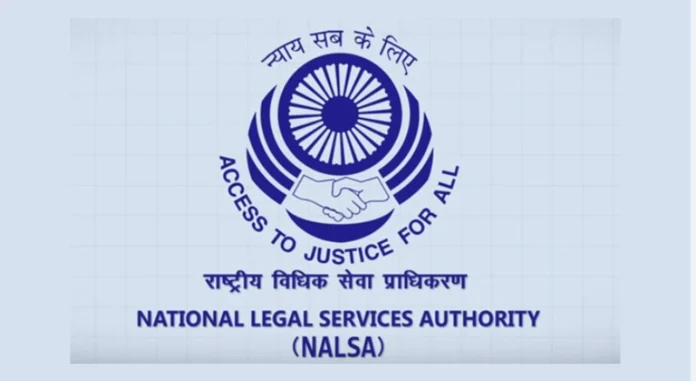By Dilip Bobb
Two recent events, one being a heart-breaking tragedy, and the other well deserving if belated, involved NALSA, or the National Legal Services Authority. The tragedy was the horrific Air India crash in Ahmedabad. NALSA and the Gujarat State Legal Services Authority (GLSA) launched a joint initiative to provide legal and psychological support to the victims and their families. This included a dedicated “Plane crash legal support helpdesk” to offer assistance with documentation, identity verification, claims, and legal guidance.
The initiative was carried out under the guidance of NALSA’s top leadership, Patron-in-Chief Chief Justice BR Gavai and Executive Chairman Justice Surya Kant. In fact, Justice Kant was nominated as the new Executive Chairman of NALSA in May 2025. By tradition, the senior-most judge of the Supreme Court occupies that position.
How many of the victim’s families availed of the services offered by NALSA and GLSA is not known, but the fact that since its inception in 1987, NALSA has gone beyond its brief as a service meant to provide free legal aid to the weaker sections of society suggests that the patronage of
the Supreme Court has something to do with the expansion of its jurisdiction set out under the Legal Services Authorities Act, 1987.
A SALUTE TO SOLDIERS: EXPANDING LEGAL AID TO DEFENCE FAMILIES
Last month, NALSA launched “Veer Parivar Sahayata Yojana”, a scheme to strengthen legal aid for defence personnel and their families, during the North Zone Regional Conference held in Srinagar. The topic of the conference was: “Reaffirming the Constitutional Vision of Justice for Defence Personnel and Tribals”. Presiding over the event, Justice Kant said the scheme “seeks to build upon the existing framework of legal services clinics by establishing a dedicated network across Sainik Boards at the Zilla, Rajya, and Kendra levels…” Justice Kant said the initiative “stands as a declaration of our intent to extend every possible support and opportunity in safeguarding the rights of our military and paramilitary personnel and their families…”
LANDMARK VICTORY: THE NALSA CASE THAT CHANGED LIVES
The Authority’s shining moment came in 2014 in the landmark case NALSA vs Union of India, which led to the ruling that legally recognised transgenders as a third gender. The judgment delivered by Justices KS Panicker Radhakrishnan and Arjan Kumar Sikri said: “Recognition of transgenders as a third gender is not a social or medical issue, but a human rights issue…” That judgment not only legally recognised transgenders but also affirmed their fundamental rights under the Constitution.
ON THE GROUND: LEGAL CLINICS AND THE REALITY OF FREE AID
When NALSA was made official, its brief was to establish such legal aid services in every state, which are operational, but most need prodding by the patron-in-chief or executive head, the chief justice of the state High Court, to stir them into action. Where they have performed well is to establish permanent legal aid clinics in all the state’s jails. Much of the positive work done by the state NALSA units is to provide legal and other financial help to victims of acid attacks, the handicapped, families who may have lost their sole bread earner, or victims of domestic violence.
THE CONSTITUTIONAL MANDATE: ARTICLE 39A IN ACTION
NALSA’s efforts are also part of the Supreme Court Legal Services Committee, which oversees the constitutional right to free legal aid enshrined in Article 39A of the Constitution. The process of making free legal aid available to the needy was started by Justice PN Bhagwati who would later go on to become chief justice.
THE SYSTEMIC HURDLES: GAPS IN FUNDING, ACCESS, AND AWARENESS
However, many senior members of the Bar Council of India, who are also committed to providing free legal aid to the needy, say that the current free legal aid system lacks efficient procedures for tracking, analysing, and providing feedback on the effectiveness of the help offered. Another major hurdle is the huge backlog of cases in the traditional court system which impedes greater involvement. There is also the problem of illiteracy and lack of awareness among those for whom such legal aid is intended.
BUDGETARY CONSTRAINTS: A DROP IN THE OCEAN
In one analysis of such schemes, it was found that another setback is insufficient financial support. Only 0.2 per cent of the country’s GDP is spent on the administration of law and justice in the country, a grossly inadequate amount in the world’s largest democracy. India also underspends on legal aid provisions. The budget for legal aid comprises less than one percent of the total justice budget.
A mere Rs 200 crore in the budget estimates during the financial year 2023-24 was allocated to NALSA, which, in a country where so many are in desperate need of free legal aid, is the proverbial drop in the ocean. Conclusion: The right to justice is still out of reach for many. India does offer free legal aid, but the freedom to access it is the devil in the detail.
—The writer is former Senior Managing Editor, India Legal magazine


